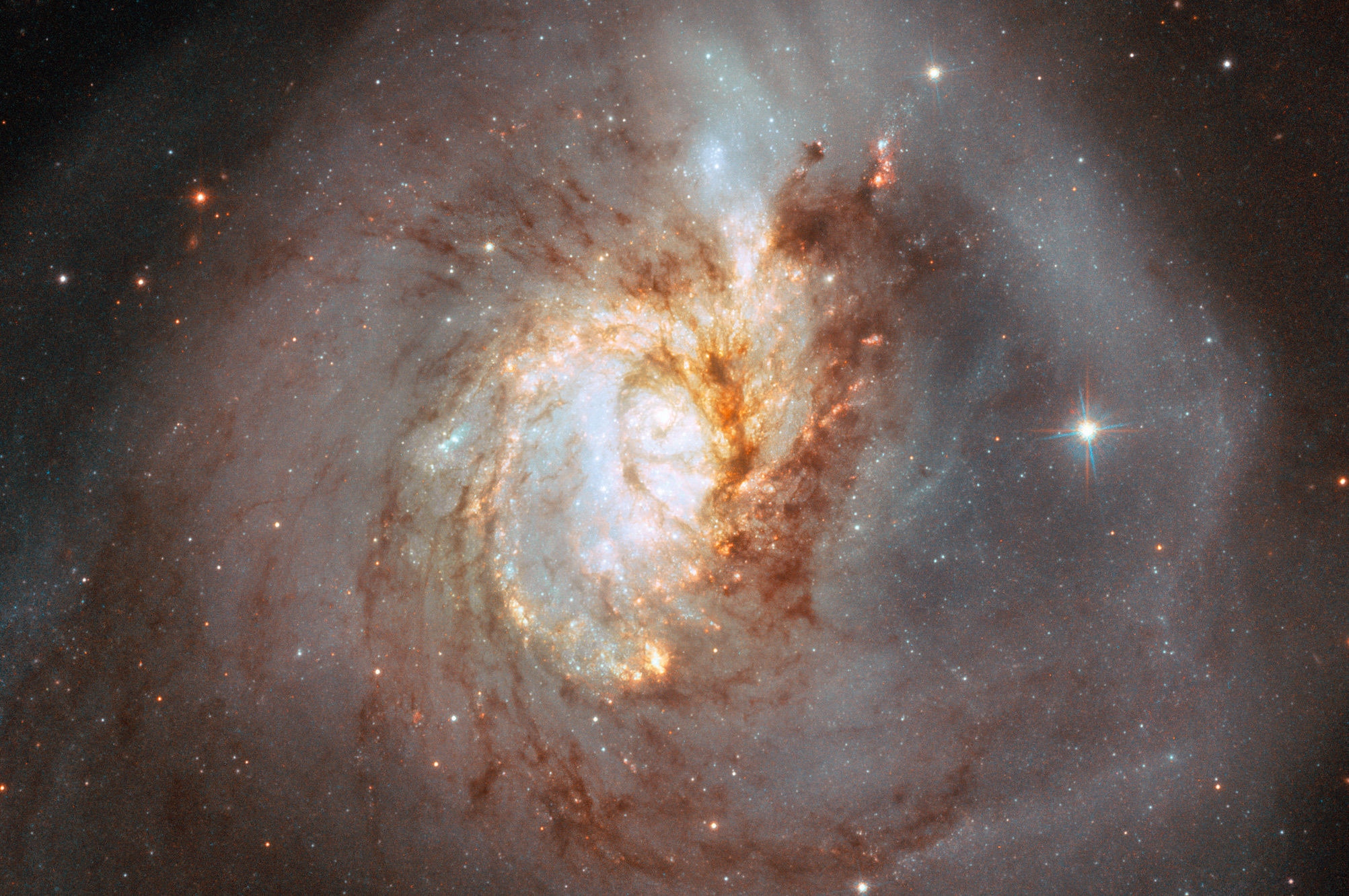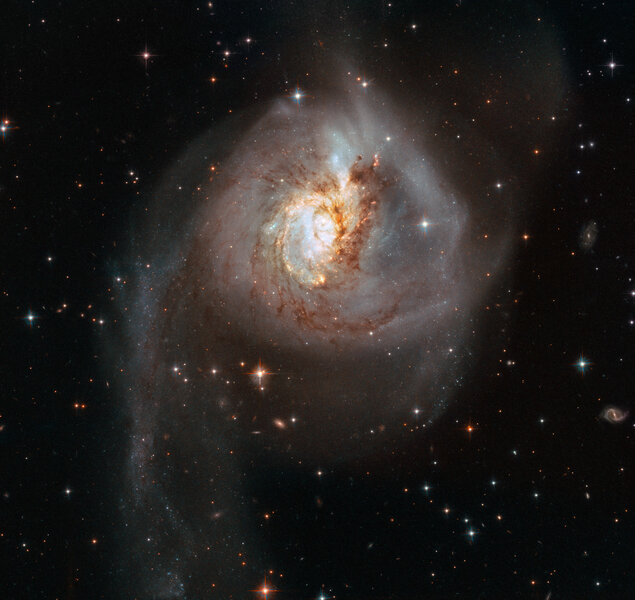Create a free profile to get unlimited access to exclusive videos, sweepstakes, and more!
The staggering beauty of galactic collisions

Every once in a great while, an astronomical image will come down that is so arresting, so soul-touchingly beautiful, that it stops you in your tracks. It almost doesn’t matter what kind of object it is — planet, nebula, star cluster, galaxy — it’s the artistry of it that somehow reaches out to you.
NGC 3256 is one such object. This Hubble Space Telescope image of it is one such work of art.
This sort of image takes my breath away. At first glance it’s the scope of it, the glorious sweeping nature of it as a whole. But then your eye starts to drill down into the detail, and you see thousands of stars as specks of light texturing the image, filigree-like streamers of darker dust etched in strokes as small as your eye can see, and then as your gaze wanders about you take in the background galaxies, so far away that the Universe has aged appreciably in the time it took their light to reach us.
NGC 3256 is fine art.
But as lush and satiating this image is for your sense of aesthetics, the science, the reality, behind it is even more awe-inspiring.
NGC 3256 is two galaxies colliding, merging into one.
A galaxy is an immense thing, something so vast our brains struggle to comprehend it. A decent-sized galaxy might contain a hundred billion stars, an equal amount of mass in gas and dust, and a halo of invisible dark matter surrounding it all. The Milky Way is 100,000 light years across — meaning it takes 100 millennia for light, the fastest thing in the Universe, to make that journey. In human terms, from one side to the other is 1,000,000,000,000,000,000 kilometers. A staggering distance.
Galaxies tend to exist in groups, even clusters from dozens to thousands of members strong. They are unique in this manner in the cosmos; most objects are small and far apart. For example, a star might be a million kilometers wide, but the nearest star to it tens of trillions of kilometers away. The ratio of the sizes of stars to the distance between them can be in the millions.
But with galaxies, that ratio may be very small. Not millions, or even thousands, but perhaps ten. Less. Because of this, galaxies can get unnervingly close to each other. And if they get too close, they can collide.
Even if they don’t suffer a direct hit, they can still affect each other gravitationally, so astronomers still categorize this as a collision. The gravity of one galaxy can pull on the outskirts of the other, drawing off vast streamers of stars and gas, creating long, arcing tidal tails. These are common sights where galaxies congregate.
But if they approach each other slowly enough, and pass closely enough, each cannot overcome the gravity of the other. The physics is complex, but the outcome is inevitable: They merge. Huge forces stir them up, creating discord and mayhem, tossing stars around like leaves in a dust devil. Counterintuitively, perhaps, it’s extremely rare for stars to physically collide, again because they are small and the distances vast.
But nebulae, gas clouds, can be dozens or even hundreds of light years wide, and collisions between them in mergers are common. This can collapse the clouds, sparking furious starbirth. Colliding galaxies are fecund, and we poetically call them starburst galaxies.
NGC 3256 is all this. Some half billion years ago, two spiral galaxies approached each other. Perhaps they missed on the first pass, only to slow, reverse course, and drag each other back. Chaos ensued, with visible remnants surviving to today. You can see a tidal tail to the left, and another still suffering turbulent times on the right.
But even out of chaos order can be found. The center of the now single galaxy has patterns in it, arcs of dust sloshing across thousands of light years yet still winding around the center, spiral arms disturbed but still maintaining some structure. Colliding gas clouds are fertile, and NGC 3256 now creates stars at a rate more than 75 times what the Milky Way can muster.
Amazingly, the two major tails have very different stars in them. The one on the left has many stars dated to be about 300 million years old, formed after the collision, no doubt because of it. The fainter tail to the right has mostly older stars, 800 million years or thereabouts, so these already existed in one of the two mated galaxies, and were there to witness the merger firsthand.
We, however, see this joining of two galaxies 400 million years after the primary event, far too late to see them in flagrante delicto, but still soon enough to see the effects. What will this look like 400 million years hence? I suspect the overall spiral structure may remain, though it will take quite some time for calmness to return. Oh, how I’d love to see this galaxy in the eons to come!
But our descendants may yet see something even more spectacular. When you look at NGC 3256, you’re looking at our future. In four billion years or so, the enormous Andromeda galaxy, easily twice our mass, will collide with the Milky Way. The merger will eventually produce something very like NGC 3256, if briefly on the cosmic timescale, until it settles down to become something with more overall order.
Here is a NASA animation showing this future event:
Notice that after the collision, the stars turn red; the huge burst of star formation may deplete the available gas for starbirth, so after a few hundred million years no more stars are created. Massive blue stars use their fuel profligately and die sooner, leaving redder stars behind to light the Universe.
This collision will happen during the Sun’s lifetime; the planets may yet still orbit it when the collision occurs, giving our far-distant children a view that is unparalleled in our experience. They will see wonders in their sky we can only imagine.
… or that we can see for ourselves, if terribly removed, via galaxies like NGC 3256.




























